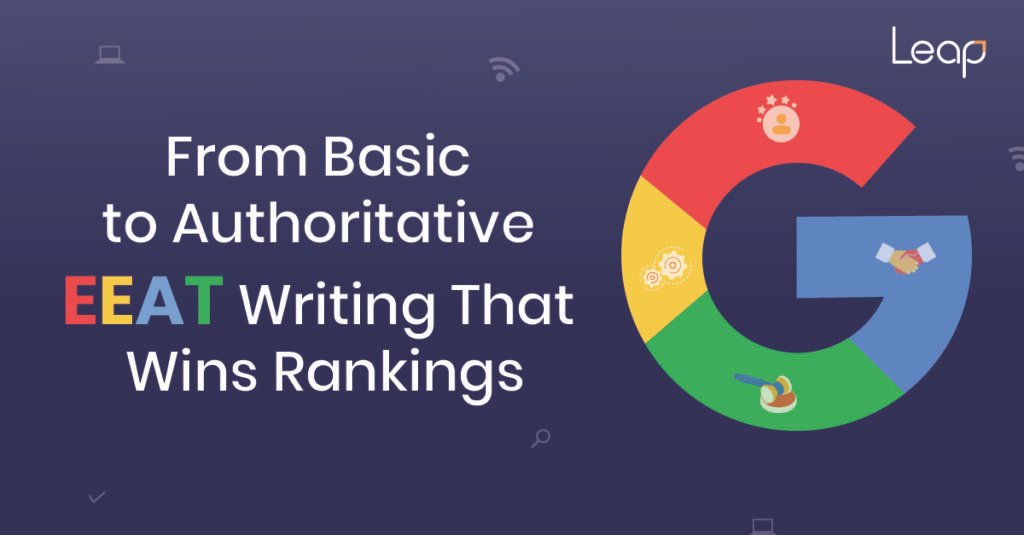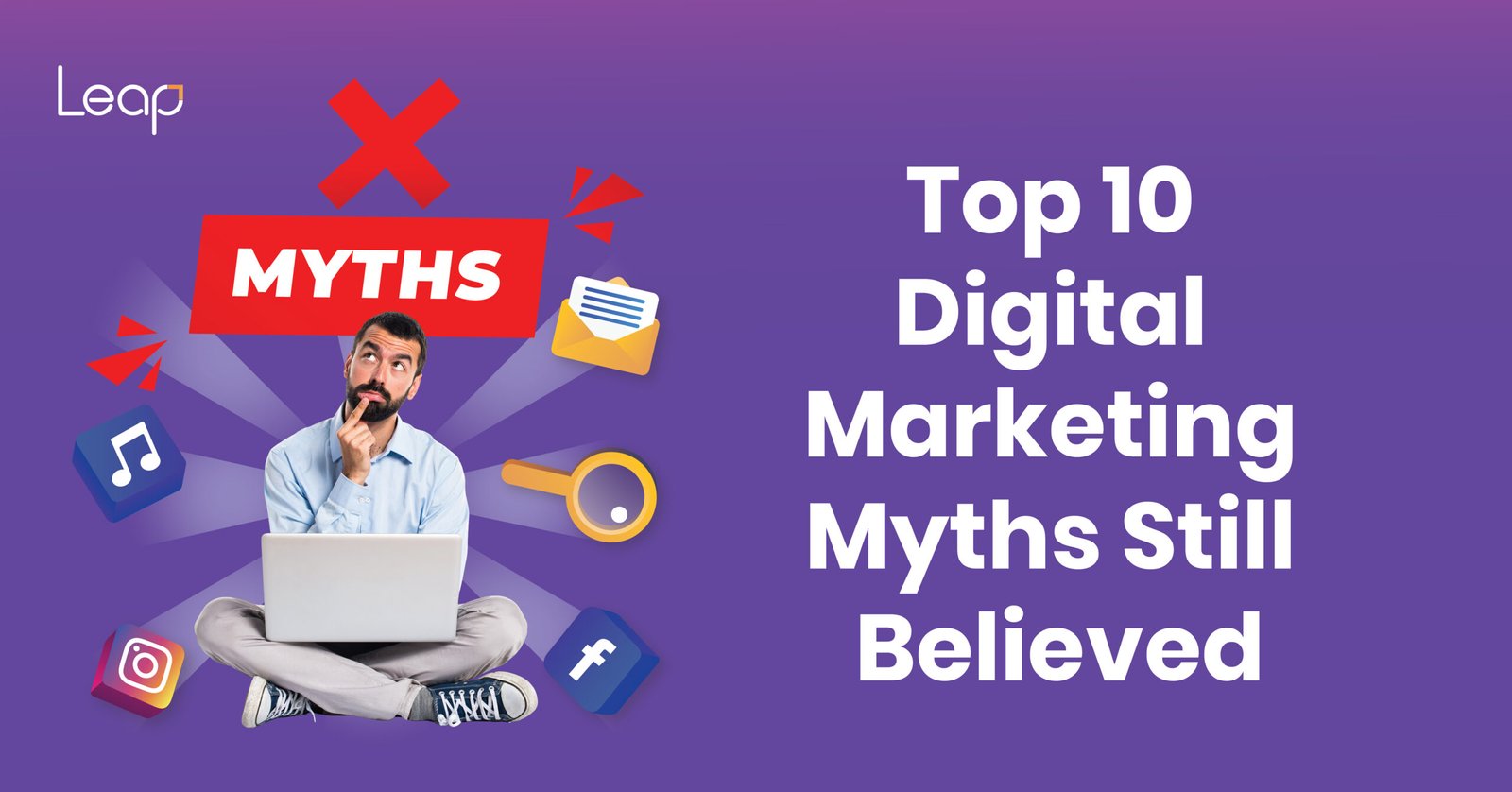
In the ever-evolving landscape of digital marketing, where content reigns supreme, understanding what makes a blog post stand out to both readers and search engines is paramount. It’s no longer enough to simply churn out articles; to truly succeed, your content needs to earn Google’s trust. This is where EEAT – Expertise, Authoritativeness, and Trustworthiness – comes into play, forming the bedrock of content authority. For digital marketing agencies and content creators alike, mastering EEAT isn’t just a best practice; it’s a fundamental requirement for achieving high SEO rankings and connecting meaningfully with your audience.
In this comprehensive guide, we’ll delve deep into the nuances of EEAT, exploring how each component contributes to building robust content authority. We’ll provide actionable strategies and practical tips to help you craft blog posts that Google not only recognizes but actively prioritizes, ultimately driving more organic traffic and establishing your brand as a credible voice in your niche.
Understanding EEAT: Definitions and Importance
At its core, EEAT is a framework used by Google’s quality raters to evaluate the overall quality of web pages, particularly those dealing with sensitive topics known as “Your Money Your Life” (YMYL) content (e.g., health, finance, safety). However, its principles apply broadly to all content, influencing how Google perceives and ranks every type of blog post.
Let’s break down each element:
Expertise:
This refers to the knowledge and skill of the content creator. Is the author a recognized expert in the field? Do they demonstrate a deep understanding of the subject matter? For instance, a medical doctor writing about health conditions would demonstrate high expertise. For a digital marketing blog, expertise would be shown by showcasing proven strategies and up-to-date industry insights.
Authoritativeness:
This is about the reputation of the content creator and the website itself. Is the individual or organization recognized as a go-to source for information on this topic? Do other reputable sites link to or reference their content? A website with many high-quality backlinks from established industry players indicates strong authoritativeness.
Trustworthiness:
This element concerns the accuracy, honesty, and reliability of the content and the website. Can users trust the information presented? Is the site secure? Are there clear contact details and privacy policies? Building trustworthiness involves being transparent, citing sources, and ensuring the information is factual and unbiased.
Why is EEAT So Important for SEO?
Google’s primary goal is to provide users with the most helpful and reliable information available. By emphasizing EEAT, Google aims to filter out low-quality, misleading, or even harmful content. Content that exhibits strong EEAT signals is more likely to:
- Rank Higher: Google’s algorithms are designed to favor content from authoritative and trustworthy sources.
- Gain User Trust: When users perceive your content as expert and reliable, they are more likely to spend more time on your page, return for future queries, and even convert into customers.
- Improve Brand Reputation: Consistently producing high-EEAT content positions your brand as a leader and a credible source of information, fostering long-term loyalty.
- Withstand Algorithm Updates: As Google refines its algorithms, the core principles of EEAT remain consistent. Investing in high-quality, trustworthy content provides a strong foundation that is less susceptible to negative impacts from algorithm changes.
The Role of Expertise in Content Creation
Expertise
is the cornerstone of any high-quality blog post. It’s about demonstrating that you, or your content creators, possess the deep knowledge and understanding necessary to provide accurate and insightful information. Without genuine expertise, your content risks being superficial, inaccurate, or simply unhelpful.
How to Showcase Your Expertise:
Author Bios:
Every blog post should feature a clear, concise, and compelling author bio. This bio should highlight the author’s relevant qualifications, experience, and credentials. For example, if a post is about SEO, the author’s bio should mention their years of experience in SEO, certifications, or successful campaigns they’ve managed.
Credentials and Qualifications:
Don’t be shy about showcasing academic degrees, professional certifications, awards, or specialized training. These add immediate credibility.
Practical Experience and Case Studies:
Theoretical knowledge is valuable, but practical experience is often more impactful. Share real-world examples, case studies, or anecdotes that illustrate your points and demonstrate your hands-on understanding. For instance, instead of just stating that email marketing is effective, share a case study of how you achieved a specific ROI for a client through an email campaign.
Guest Contributors:
Collaborating with recognized experts in your field can significantly boost the expertise of your content. When a thought leader from outside your organization contributes, it signals to Google and your audience that you prioritize high-quality insights. Ensure their bio is prominently featured.
Research and Data-Driven Insights:
Back up your claims with well-researched data, statistics, and studies. Cite your sources clearly. This shows that your content is not based on mere opinion but on verifiable facts. A study by SEMrush, for example, found that content with cited sources performs better in search rankings.
Detailed and Comprehensive Content:
Expert content doesn’t just skim the surface. It delves deep into a topic, addressing various facets, nuances, and potential challenges. This demonstrates a thorough understanding that goes beyond basic knowledge.
Original Research and Insights:
If possible, conduct your own surveys, analyses, or experiments and present original findings. This is a powerful way to establish your unique expertise and position your brand as a thought leader.
Example:
Instead of writing a generic post titled “Tips for Social Media Marketing,” an expert-driven post might be “Advanced LinkedIn Lead Generation Strategies for B2B SaaS Companies: A 2025 Guide,” authored by a certified LinkedIn marketing specialist with 10+ years of experience.
Establishing Authoritativeness: How to Showcase Your Knowledge
While expertise relates to the individual or team creating the content, authoritativeness extends to the overall reputation of your website and brand as a credible source of information. It’s about being recognized and referenced within your industry.
Strategies to Build Authoritativeness:
High-Quality Backlinks:
This is one of the most significant indicators of authoritativeness. When other reputable websites link to your blog posts, it signals to Google that your content is valuable and trustworthy. Focus on earning backlinks through:
- Creating linkable assets: Infographics, comprehensive guides, original research, and useful tools are highly shareable and attract backlinks naturally.
- Guest posting: Contributing high-quality content to other authoritative websites in your niche can earn you valuable backlinks and exposure.
- Broken link building: Finding broken links on other websites and suggesting your relevant content as a replacement can be an effective strategy.
- Digital PR: Proactively reaching out to journalists and industry influencers to cover your content or research.
Mentions and Citations:
Beyond direct backlinks, mentions of your brand, experts, or content on other authoritative sites, even without a direct link, contribute to your perceived authoritativeness.
Brand Presence and Recognition:
A strong online presence across various platforms (social media, industry forums, online communities) can boost your authoritativeness. Actively participate in discussions, answer questions, and share your insights.
Industry Awards and Recognition:
If your company or its individuals have received industry awards or accolades, prominently display them on your website. This provides external validation of your expertise and authority.
Speaking Engagements and Webinars:
Having your team members speak at industry conferences, webinars, or podcasts positions them as thought leaders, enhancing your brand’s authority.
Consistent Publishing Schedule:
Regularly publishing high-quality, EEAT-optimized blog posts demonstrates your commitment to providing valuable information and establishes your site as an active and reliable resource.
User Engagement Metrics:
While not directly an authoritativeness factor, high user engagement (time on page, low bounce rate, comments, social shares) can indirectly signal to Google that your content is valuable and authoritative, leading to increased visibility.
Strong Internal Linking:
Linking to other relevant, high-quality content within your own site helps Google understand the breadth and depth of your coverage on a topic, signaling greater authoritativeness.
Building Trustworthiness: Techniques to Gain Reader Confidence
Trustworthiness is the bedrock upon which long-term relationships with your audience and Google are built. It’s about demonstrating that your content is accurate, reliable, unbiased, and safe.
Key Strategies for Fostering Trustworthiness:
Accuracy and Fact-Checking:
Every piece of information in your blog posts must be meticulously fact-checked. Incorrect information can severely damage your credibility. Implement a robust editorial process that includes fact-checking and expert review.
Transparency and Citations:
Clearly cite all sources of information, especially statistics, research findings, and expert quotes. This not only validates your claims but also allows readers to verify the information independently. Link directly to original sources whenever possible.
Clear Disclaimers (where necessary):
For YMYL topics, it’s crucial to include clear disclaimers, such as “This content is for informational purposes only and does not constitute medical advice.”
Website Security (HTTPS):
Ensure your website uses HTTPS (Hypertext Transfer Protocol Secure). This encrypts communication between your website and users, protecting their data and signaling to Google that your site is secure. All modern websites should be HTTPS.
Contact Information and About Us Page:
Provide clear and easily accessible contact information (email, phone number, physical address if applicable). A comprehensive “About Us” page detailing your company’s mission, values, team members, and history builds transparency and trust.
Privacy Policy and Terms of Service:
Have clearly written and easily accessible privacy policies and terms of service. These documents outline how you handle user data and establish legal boundaries, demonstrating professionalism and respect for user privacy.
User Reviews and Testimonials:
If applicable, feature genuine user reviews and testimonials. Positive social proof can significantly enhance trustworthiness.
Prompt and Helpful Customer Service:
For digital marketing agencies like Leap Marcom, responsive customer service reflects a commitment to client satisfaction, which extends to the perceived trustworthiness of your content.
Correcting Errors Prompt
If an error is identified in your content, correct it immediately and, if significant, consider adding a note about the correction. This demonstrates accountability and a commitment to accuracy.
Avoid Over-Optimizing and Keyword Stuffing:
While SEO is important, artificially inflating keyword density or engaging in deceptive SEO practices can erode trust, both with users and Google. Focus on natural language and providing value.
For a deeper dive into building a trustworthy online presence and to learn more about how a leading digital marketing agency can help you achieve your goals, visit www.leapmarcom.com.
Practical Tips for Writing Blog Posts That Align with EEAT
Now that we’ve explored the individual components of EEAT, let’s put it all together with actionable tips for crafting blog posts that truly resonate with Google’s quality guidelines.
Start with a Strong Foundation: In-Depth Research:
Before writing a single word, conduct thorough research. Go beyond surface-level information. Explore multiple reputable sources, academic papers, industry reports, and expert opinions. This foundational research is crucial for demonstrating expertise and building trustworthiness.
Identify and Leverage Your Experts:
For every blog post, identify who the best “expert” is to author it. This could be an in-house specialist, a senior team member, or a qualified guest contributor. Ensure their credentials are highlighted.
Structure for Clarity and Readability:
Even the most expert content can fall flat if it’s poorly presented.
- Use clear, concise language: Avoid jargon where simpler terms suffice.
- Break up text with headings and subheadings: This makes content scannable and digestible.
- Employ bullet points and numbered lists: Ideal for presenting complex information in an easy-to-read format.
- Utilize short paragraphs: Long blocks of text can be intimidating.
- Incorporate visuals: Images, infographics, and videos can enhance understanding and engagement.
Write for Your Audience First, Then for Search Engines:
While SEO is vital, your primary goal should always be to provide genuine value to your target audience. When you write content that truly helps and engages users, SEO often follows naturally.
Show, Don't Just Tell::
Instead of simply stating facts, use examples, analogies, and scenarios to illustrate your points. This makes your content more engaging and demonstrates a deeper understanding.
Regularly Update and Refresh Content:
Information becomes outdated quickly, especially in fast-moving fields like digital marketing. Regularly review your existing blog posts and update them with the latest information, statistics, and trends. This demonstrates ongoing expertise and trustworthiness.
Promote Your Content Strategically:
Getting your high-EEAT content in front of the right audience is crucial. Share it on social media, in relevant online communities, and through email newsletters. Encourage sharing and engagement.
Solicit and Respond to Comments:
Engaging with your readers in the comments section can build a sense of community and trust. Address questions thoughtfully and correct any misconceptions.
Proofread Meticulously:
Typos, grammatical errors, and factual inaccuracies can quickly erode trustworthiness. Implement a rigorous proofreading process. Consider using professional editing tools or having multiple people review the content.
Measuring Your Content's EEAT Effectiveness
While EEAT isn’t a direct ranking factor you can measure with a single metric, its impact can be observed through various analytical indicators. Monitoring these helps you understand if your blog posts are truly gaining Google’s trust and resonating with your audience.
Search Engine Rankings:
The most direct indicator. An increase in organic rankings for your target keywords suggests Google perceives your content as more authoritative and relevant.
Organic Traffic:
A sustained increase in organic traffic to your EEAT-optimized pages is a strong positive signal.
Bounce Rate:
A lower bounce rate indicates that users are finding your content relevant and engaging, spending more time on your page.
Time on Page/Average Session Duration:
A longer time on page suggests users are deeply engaged with your content, absorbing the information you’ve provided.
User Engagement Metrics:
- Comments and Shares: High numbers of comments and social shares indicate that your content is sparking conversations and being found valuable enough to share.
- Backlinks and Referring Domains: Track the number and quality of backlinks your blog posts receive. High-quality backlinks from authoritative sites are a strong EEAT signal. Tools like Ahrefs or SEMrush can help monitor this.
- Brand Mentions: Monitor mentions of your brand or specific experts on your team across the web. These non-linked mentions still contribute to brand authority.
Direct Traffic:
An increase in direct traffic to your website suggests that users are intentionally seeking out your brand, indicating recognition and trust.
Conversion Rates:
Ultimately, if your content is authoritative and trustworthy, it should lead to higher conversion rates (e.g., newsletter sign-ups, contact form submissions, sales).
Google Search Console Insights:
Pay attention to “Core Web Vitals” and “Page Experience” reports. While not directly EEAT, good technical performance contributes to a positive user experience, which indirectly supports trustworthiness.
By regularly analyzing these metrics, you can identify areas where your blog posts are excelling in EEAT and where there might be opportunities for improvement.
The Future of EEAT in SEO and Digital Marketing
EEAT is not a passing trend; it’s a fundamental principle that will only grow in importance as search engines become more sophisticated. Google’s ongoing commitment to delivering high-quality, trustworthy information means that content creators must continually elevate their standards.
Key Trends and Predictions:
Increasing Emphasis on Human Expertise:
While AI-generated content is becoming more prevalent, Google will likely place an even greater emphasis on content that demonstrates genuine human expertise, unique insights, and lived experience. The “human touch” will become a differentiator.
More Granular EEAT Signals:
Google’s algorithms will likely become even more adept at identifying nuanced signals of expertise, authoritativeness, and trustworthiness, going beyond simple keywords or backlinks. This could include analyzing author history, editorial processes, and even the “voice” of the content.
Multi-Platform EEAT:
EEAT won’t be confined to just websites. Google will likely assess EEAT across various platforms, including social media profiles, YouTube channels, and other digital assets, to form a holistic view of a brand’s authority.
The Rise of "Experience" (E-E-A-T):
Google recently updated its Search Quality Rater Guidelines to include an additional “E” for Experience, making it E-E-A-T. This emphasizes the importance of direct, first-hand experience with the topic. For example, a product review written by someone who has actually used the product would demonstrate “Experience.” This adds another layer to building comprehensive content authority.
AI as an EEAT Enabler (Not Replacer):
AI tools can assist with research, content outlines, and even drafting, but they will serve best as enablers for human experts. The unique insights, empathy, and nuanced understanding of human experts will remain irreplaceable for high-EEAT content.
Transparency as a Competitive Advantage:
Brands that are fully transparent about their content creation process, their experts, and their data sources will gain a significant competitive edge in building trust.
In this future, digital marketing agencies like Leap Marcom will play an even more critical role in guiding clients to produce EEAT-optimized content. The focus will shift from merely keyword stuffing to developing holistic content strategies that build genuine authority and trust with both algorithms and audiences.
Frequently Asked Questions (FAQs)
While Google states that EEAT itself isn’t a direct algorithmically quantifiable ranking factor in the same way keywords or backlinks are, it is a framework used by human quality raters to assess the overall quality of a page. The signals that contribute to strong EEAT (like high-quality backlinks, positive user engagement, and expert authorship) are factors that Google’s algorithms consider when determining rankings. So, while not a direct switch, improving your EEAT directly contributes to better SEO performance.
The addition of “Experience” emphasizes the importance of first-hand knowledge and direct involvement with the topic. For content creators, this means not just demonstrating academic expertise, but also practical, real-world experience. For example, if you’re writing a review of a software tool, showing that you’ve personally used and achieved results with it (e.g., screenshots, case studies from your own experience) will boost your E-E-A-T. It encourages more authentic, lived-experience perspectives, especially for reviews, tutorials, and personal stories.
Absolutely! While established brands might have an advantage in authoritativeness initially, small businesses can excel in expertise and trustworthiness. Focus on niching down and becoming the go-to expert for a very specific topic. Create incredibly detailed, accurate, and helpful content in that niche. Be transparent, build a strong online presence, and actively engage with your community. Over time, consistent high-quality content will earn you backlinks and mentions, building your authoritativeness even if your brand is new.
It’s recommended to conduct regular content audits, ideally every 6-12 months, specifically with an EEAT lens. This is especially crucial for “Your Money Your Life” (YMYL) content, which requires more frequent review due to its sensitive nature. During these audits, check for outdated information, broken links, opportunities to add expert quotes or case studies, and to refresh author bios. Google’s algorithms and user expectations are constantly evolving, so consistent review is key.
AI content itself isn’t inherently bad for EEAT, but how it’s used can be. If AI is used to generate vast amounts of low-quality, generic, or inaccurate content without human oversight or expertise, it will undoubtedly hurt EEAT. However, if AI tools are used to assist human experts (e.g., for research, outlining, grammar checks, or drafting initial concepts) and the final output is thoroughly reviewed, fact-checked, and enhanced with unique human insights and experience, then it can actually help scale the production of high-EEAT content. The key is that the human element of expertise, authoritativeness, and trustworthiness must remain central.
Conclusion
In the competitive world of digital marketing, where countless blog posts vie for attention, establishing EEAT and content authority is no longer optional – it’s a strategic imperative. By consistently demonstrating Expertise, Authoritativeness, and Trustworthiness in your content, you not only align with Google’s core objectives but also build a loyal audience that trusts your brand.
We’ve explored how showcasing author expertise through detailed bios and practical experience, building authoritativeness through high-quality backlinks and brand mentions, and fostering trustworthiness through accuracy, transparency, and secure website practices are crucial for every blog post you publish. The journey to becoming a trusted source for information is ongoing, requiring continuous effort, meticulous attention to detail, and a genuine commitment to providing value.
Embrace the principles of EEAT, and you’ll find your blog posts not only climbing the search rankings but also forging deeper connections with your readers. Start implementing these tips today to transform your content strategy.
We encourage you to explore the extensive resources available on www.leapmarcom.com for further insights into crafting compelling content and optimizing your digital marketing efforts.
What are your biggest challenges in creating EEAT-optimized content? Share your thoughts in the comments below, or reach out to Leap Marcom for expert guidance on elevating your digital marketing strategy!








